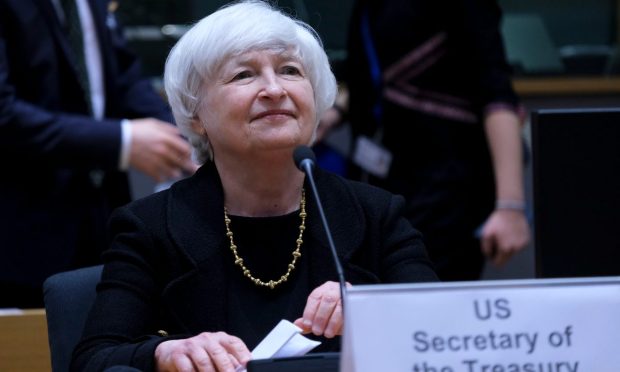Yellen: Terra’s Fall Shows Stablecoin Dangers

U.S. Treasury Secretary Janet Yellen on Thursday (May 12) called for new regulations on stablecoins, citing the dramatic fall of the Terra token.
“I wouldn’t characterize it at this scale as a real threat to financial stability, but they’re growing very rapidly and they present the same kind of risks that we have known for centuries in connection with bank runs,” Yellen told the U.S. House Financial Services Committee.
Yellen’s comments came soon after a market-wide crypto collapse that saw almost all the top 100 cryptocurrencies fall between 20% and 35% overnight.
While the market had recovered somewhat Thursday afternoon, many tokens were still down 5% to 15%. The drop was triggered by the de-pegging of stablecoin TerraUSD (UST), which shifted between $0.03 and $0.83 over the past 24 hours.
Read more: Tether Breaks Buck as Stablecoin Panic Spreads
That, in turn, caused the implosion of the price of algorithmic stablecoin UST’s partner token, Terra, or LUNA, which is used in the automated arbitrage mechanism that was designed to maintain UST’s dollar peg.
LUNA began the month above $80 but fell below $0.01, having wiped out nearly all of its $29 billion market capitalization.
Yellen was before the House committee to update lawmakers on Financial Stability Oversight Council’s 2021 annual report, touching on topics that included climate change and the Russia/Ukraine conflict as well as cryptocurrency.
See also: BIS Committee Chair Questions Crypto Benefits, Calls for Regulation
Also Thursday, Pablo Hernández de Cos, chair of the Basel Committee on Banking Supervision and governor of the Bank of Spain, warned that rapid developments in decentralized finance (DeFi) and crypto-assets underlined the need for a proactive and forward-looking regulations.
Speaking at the 36th Annual General Meeting of the International Swaps and Derivatives Association in Madrid, Hernández de Cos argued that while crypto assets and DeFi make up a fraction of global financial assets and banks’ exposures are limited, a proper response is to bring these areas within the relevant regulatory perimeter.
“Despite our better understanding of crypto assets and DeFi, the jury is still out when it comes to ascertaining how best to harness their oft-cited promises and benefits, while mitigating their risks and safeguarding financial stability,” Hernández de Cos said.
